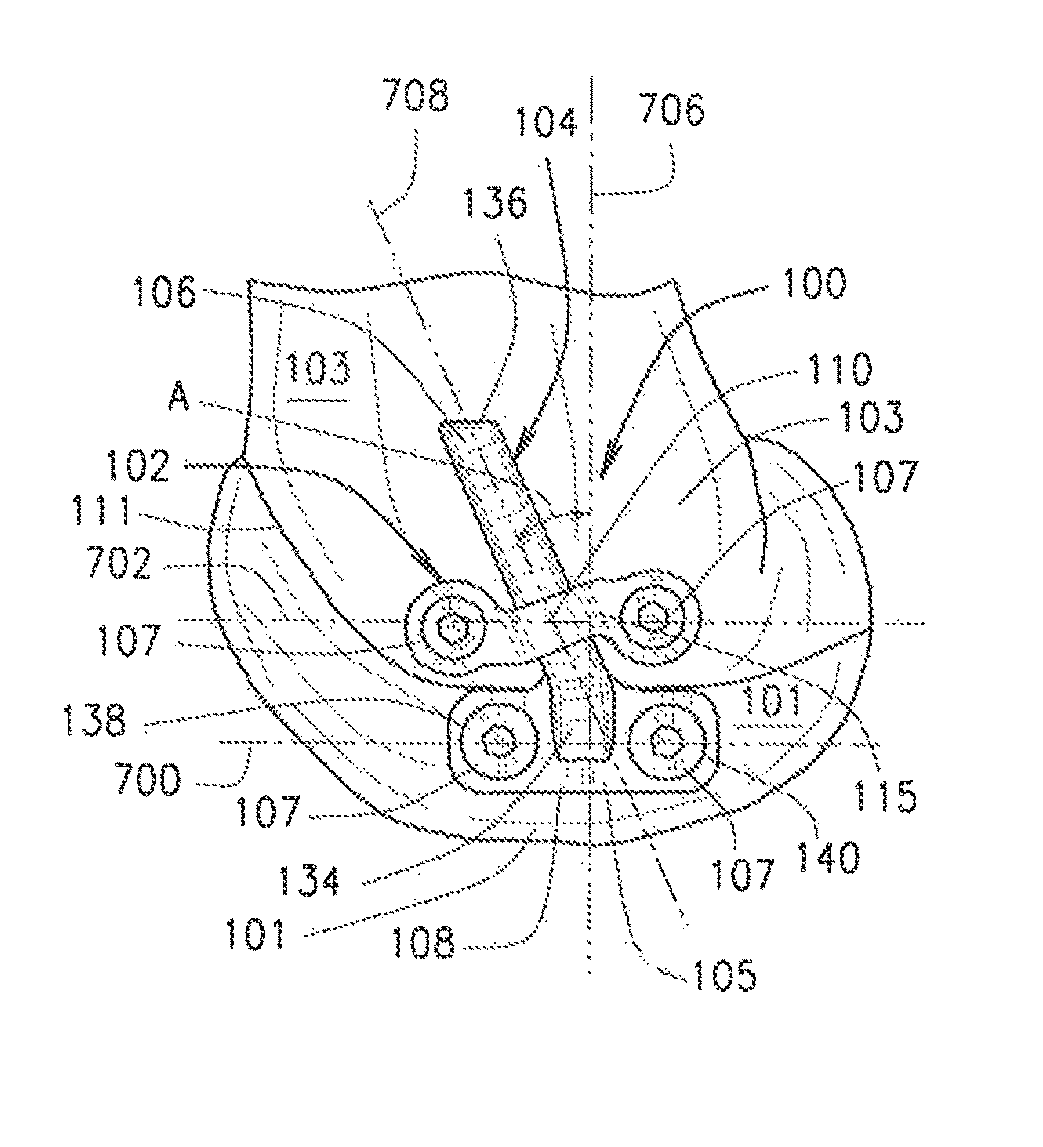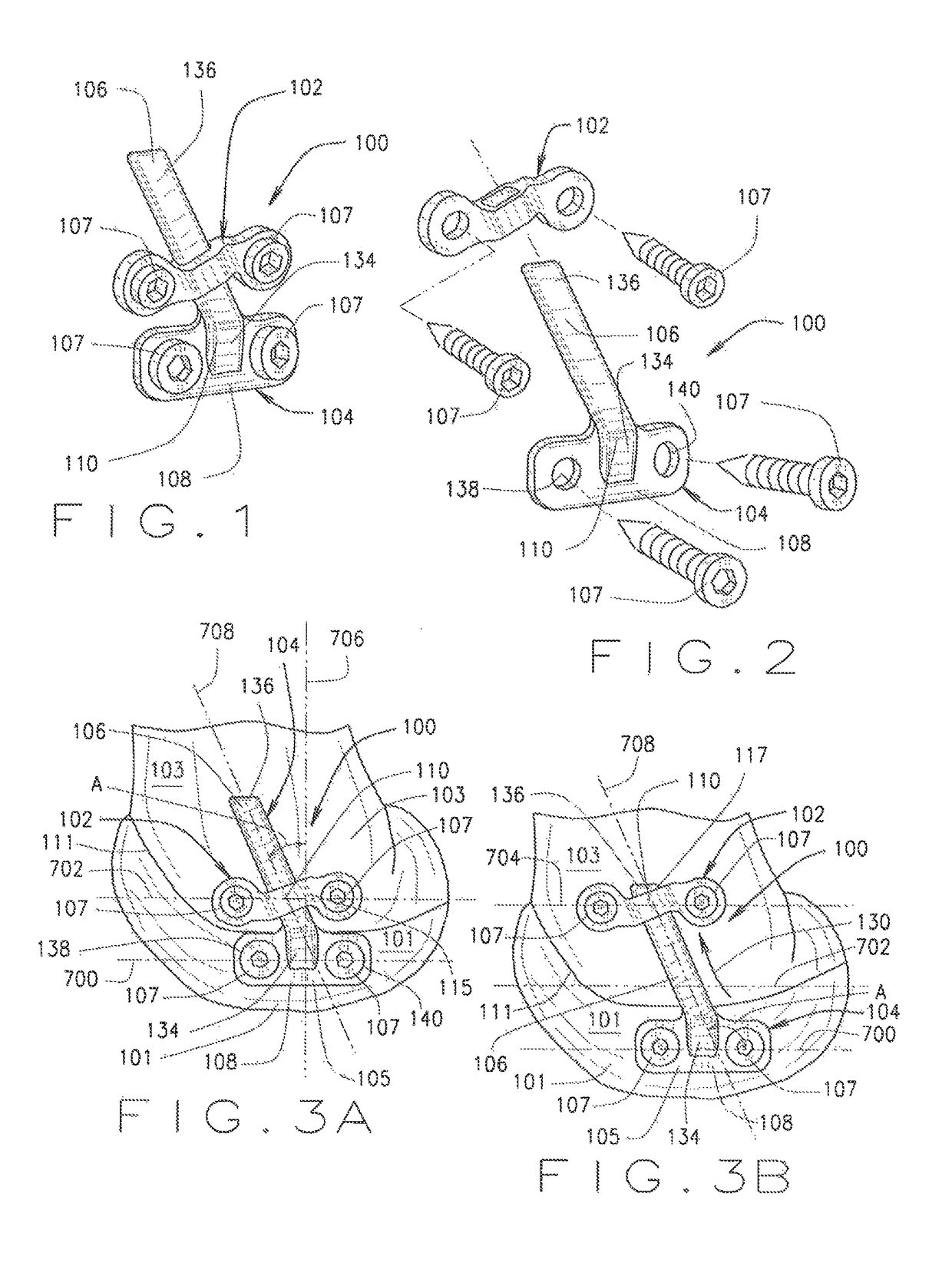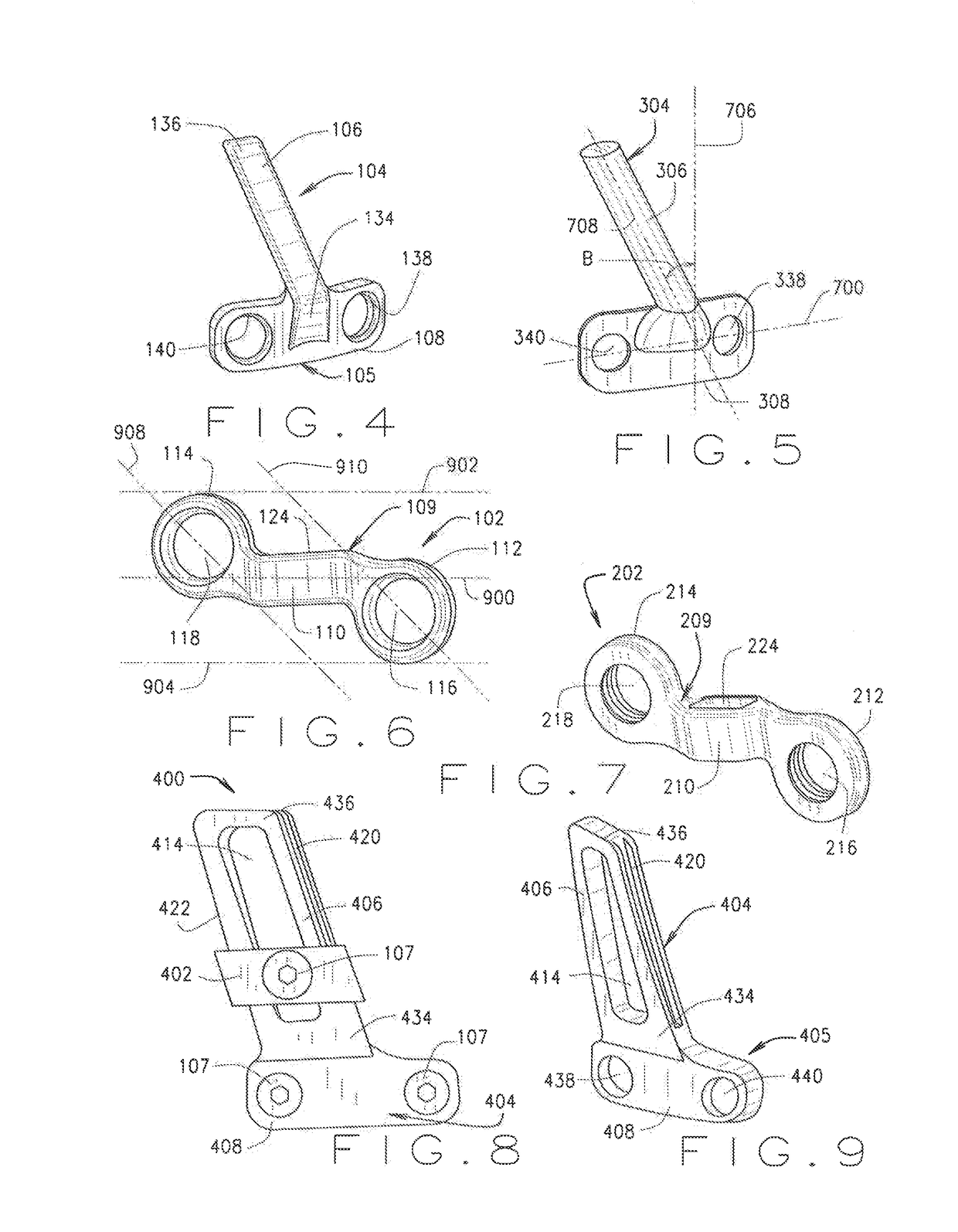Orthopedic apparatus for correcting rotational bone deformities and method for using the orthopedic apparatus
a technology of rotational bone deformation and orthopaedic device, which is applied in the direction of bone plate, bone plate, osteoporosis device, etc., can solve the problems of affecting the normal function of the bone, so as to promote the growth of the growth plate and correct the angular deformation
- Summary
- Abstract
- Description
- Claims
- Application Information
AI Technical Summary
Benefits of technology
Problems solved by technology
Method used
Image
Examples
first embodiment
[0046]Referring to the drawings, embodiments of the orthopedic apparatus are illustrated and generally indicated as 100, 400, and 600 and in FIGS. 1-33. In general, as shown in FIGS. 1 and 2, the orthopedic apparatus, designated 100, includes a mobile segment 102 coupled to a stationary segment 104 with a plurality of fastening members 107 that are configured to secure respective portions of the mobile segment 102 and stationary segment 104 to different portions of a bone for a mammalian body. In particular, one embodiment of the stationary segment 104 shown in FIGS. 1, 2, and 4, designated 104, includes a substantially angular-shaped body 105 that defines an elongated track portion 106 configured to be coupled to the mobile segment 102 (FIGS. 1 and 2) and a fixed portion 108 secured to a portion of the bone for correcting the bone deformity. As shown, the track portion 106 defines a straight proximal part 134 integral or attached to the fixed portion 108 and an angled distal part 1...
second embodiment
[0054]Referring to FIGS. 8-10 and FIGS. 19-33, orthopedic apparatus, designated 400, is illustrated. As shown in FIG. 8, the orthopedic apparatus 400 includes a stationary segment 404 coupled to a mobile segment 402. As shown specifically in FIGS. 8 and 9, the stationary segment 404 defines a curved-shaped body 405 that includes a fixed portion 408 and a track portion 406 that extends at an angle from the fixed portion 408. In some embodiments, the track portion 406 of the stationary segment 404 is configured to be engaged to the mobile segment 402 and the fixed portion 408 of the stationary segment 404 is configured to be secured to the first bone portion 101 of an individual for correcting a rotational bone deformity as the first and second bone portions 103 grow over time and torsional growth of the growth plate 111 is promoted. As shown, the track portion 406 defines a proximal part 434 integral or attached to the fixed portion 408 and an angled distal part 436 formed at the fre...
PUM
 Login to View More
Login to View More Abstract
Description
Claims
Application Information
 Login to View More
Login to View More - R&D
- Intellectual Property
- Life Sciences
- Materials
- Tech Scout
- Unparalleled Data Quality
- Higher Quality Content
- 60% Fewer Hallucinations
Browse by: Latest US Patents, China's latest patents, Technical Efficacy Thesaurus, Application Domain, Technology Topic, Popular Technical Reports.
© 2025 PatSnap. All rights reserved.Legal|Privacy policy|Modern Slavery Act Transparency Statement|Sitemap|About US| Contact US: help@patsnap.com



